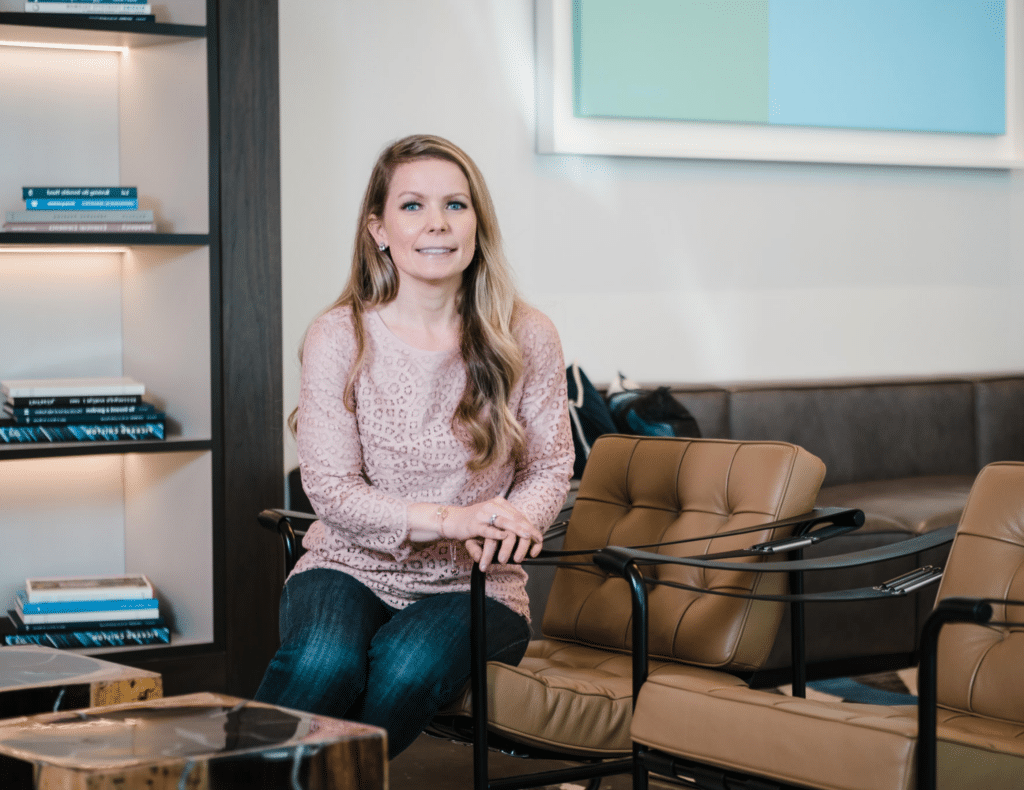
By Leigh Vickery
Technology changes. Data changes. And certainly, the delivery of legal solutions changes. But one thing does not: The value of strong relationships. Level Legal’s Leigh Vickery writes about her experience speaking on the Buying Legal panel: Data-Driven Decision Making.
When I was in first grade, I realized I could read and write upside down and backward. What I didn’t realize is that few people in the world can do this. For me, I simply picture in my head what the outcome should look like for the reader, place my pencil to paper, and then start writing the sentence upside down – beginning with the end.
This skill is more useful than it might seem, although I do try and respect the privacy of the person who assumes that I can’t read what’s facing them. It also has played a big role in how I see problems and try to solve them. It comes fairly naturally for me to think and act holistically– and begin with the outcome in mind.
These thoughts ran through my head last week at the Buying Legal Americas Procurement Conference in NYC. Buying Legal is the brainchild of the remarkable Silvia Hodges Silverstein. She connected the dots long before most that the principles and processes of the business procurement role also could serve corporate legal departments, which have historically operated independently from a corporation’s supply chain. It has also been protected from the “find ways to do more with less” CFO speech because well, when is the last time you made headway questioning an attorney about what seemed like an excessive invoice?
But the post-crash, tech-enabled way of doing business has started to change this. I could hear it listening to Andy Krebs of Intel speak of his company’s march to find partners with the right mix of not only legal expertise but also business and technological acumen. And Dr. Guenter Dobrauz of PwC’s global legal leadership team – not only were his data and insights on the future of decentralized ecosystems on point, but he has also figured out how to use storytelling to make a data-packed PowerPoint quite persuasive. (I found myself wanting to meet his grandfather.)
Buying Legal offers a safe place to share our wins, failures, predictions, and questions. The leaps that legal procurement professionals are taking to bring meaningful data into their negotiations and decision-making are encouraging and energizing, if for no other reason than it’s rare to find this level of transparency, earnestness, and collaboration at many conferences.
The one comment of the day that gave me pause was a speaker who mentioned that relationships were irrelevant now, and it’s all about data and money. By the end of his talk, he apologized for his snarkiness, but I can’t stop thinking about why he said what he said. (To be fair, I was the panelist from earlier in the day who said that relationships are more important than ever.)
Of course, I know that by adding discipline to decision-making and eliminating obvious well-known flaws (such as the human tendency to be overconfidently optimistic and therefore take unwise risks), data is going to bring a level of predictability and certainty to complex decisions that we have not seen before. My mantra is this: if you can find or create an algorithm that solves your problem, use it. Your success rate will be higher than what a human can do way more often than not, if for no other reason than you are solving with uniformity.
As I listened to his talk, I thought about how the fear of losing – be it revenue, litigation, employment, or reputation – plays a role in our choices, even unknowingly. We are moving from a place where we made legal decisions based on relationships, hoping that was enough to win the day. Now, we have access to thousands of data points to make the same decision, and we fear that any weight given to human influence will land us with the same outcome: loss.
Technology changes. Data changes. And certainly, the delivery of legal solutions changes. But one thing does not: The value of strong relationships. We are humans working together, trying to understand and solve problems the best way we know how so that each other’s lives will be better. For me, this is the why behind the what. This is the outcome that matters.
Need help managing your data? Contact Level Legal for help.
Leigh Vickery serves as the chief strategy and innovation officer for Level Legal.


